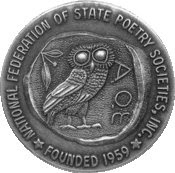The following is excerpted from a post at Dustin Brookshire's blog, "I Was Born Doing Reference Work in Sin". In this post, Dorianne Laux tells us why she writes. What I have here is the first paragraph only; for the full essay, go to Dustin's blog.
I have recently begun to think of writing as what Susan Sontag calls “a wisdom project” in her forward to Another Beauty, a collection of autobiographical essays by the great Polish poet Adam Zagajewski.
“...autobiography is an occasion to purge oneself of vanity, while advancing the project of self understanding—call it the wisdom project—which is never completed, however long the life.”
I am still hard at work on this project of the self. The solitary self, as well as the self in relation to the world and the unknown universe we swirl around in, uncertain of our purpose or future. When I wrote the poems that would become my first book, I didn’t think of it as a book, but rather as a need to understand the basic questions that all human beings ask: Who am I? Why am I here? Where am I going? What is beauty? Why is there suffering? Where is truth? These questions would arise in me in the form of poems, and in making the poems into a collection, I tried to arrange them in a shape, find a path for them to travel to make clearer those questions. I write to know the questions.
Read more about Dorianne Laux at the Poets dot org website.
Read Ms. Laux's poem 'Shipfitter's Wife' at the Poetry Foundation website.
I have recently begun to think of writing as what Susan Sontag calls “a wisdom project” in her forward to Another Beauty, a collection of autobiographical essays by the great Polish poet Adam Zagajewski.
“...autobiography is an occasion to purge oneself of vanity, while advancing the project of self understanding—call it the wisdom project—which is never completed, however long the life.”
I am still hard at work on this project of the self. The solitary self, as well as the self in relation to the world and the unknown universe we swirl around in, uncertain of our purpose or future. When I wrote the poems that would become my first book, I didn’t think of it as a book, but rather as a need to understand the basic questions that all human beings ask: Who am I? Why am I here? Where am I going? What is beauty? Why is there suffering? Where is truth? These questions would arise in me in the form of poems, and in making the poems into a collection, I tried to arrange them in a shape, find a path for them to travel to make clearer those questions. I write to know the questions.
Read more about Dorianne Laux at the Poets dot org website.
Read Ms. Laux's poem 'Shipfitter's Wife' at the Poetry Foundation website.






















